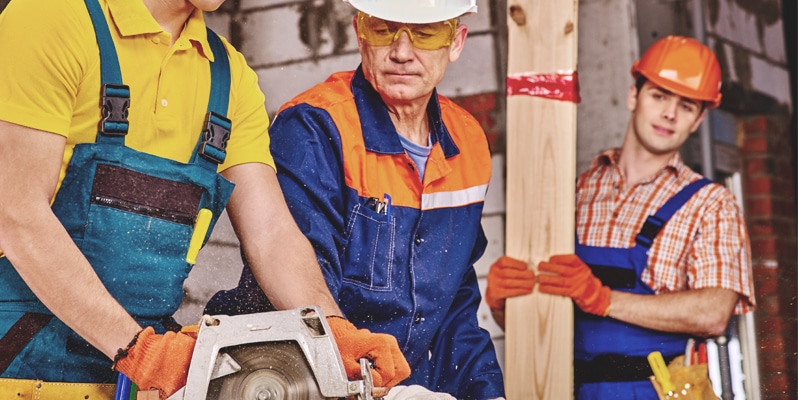Builder’s licence requirements in Victoria
In Victoria, a building licence for residential builders is called Domestic Builder Registration.
For the full list of limited licences, find out more here.
Types of builder’s licence in VIC
Domestic Builder (Unlimited) Registration
A person registered in the class of Domestic Builder (unlimited) is responsible for carrying out, or managing or arranging the carrying out of all components of domestic building work for the construction, renovation, improvement or maintenance of a home (class 1, 2, and 4 buildings, and associated class 10 buildings).
Domestic Builder (Limited) Registration
To carry out a single trade and work for consumers you usually need a Domestic Builder (Limited) Registration. A Domestic Builder (Limited) Registration may also be used by builders who install kitchens, bathrooms and laundries or build non-habitable structures such as sheds. There are several sub-classes of limited builders.
Experience requirements
To be registered as a domestic builder in Victoria, you need to prove that you have the sufficient practical experience to carry out the tasks of a builder. This practical experience usually needs to be well-rounded and includes experience with quotes and contracts, obtaining building approvals, engaging workers, resolving problems, and having work completed and handed over.
An applicant for registration as a Domestic Builder (Unlimited) needs to prove they have at least three years’ practical experience.
An applicant for registration as a Domestic Builder (Limited) will depend on the area and class of building work wanting to be done, but typically needs to prove at least two to four years’ practical experience.
Qualification requirements
Along with practical experience, builders wishing to obtain their domestic builder licence also must have certain qualifications. These qualifications differ on the type of work wishing to be undertaken and the level of experience held by the contractor.
Many applicants for builder registration, including a Domestic Builder (Unlimited), have a CPC40120 Certificate IV in Building and Construction and demonstrate to the VBA by exams and assessments that they have the equivalent skills and experience to the prescribed qualifications.
To become a Domestic Builder (Unlimited) you must have one of the following:
- A Bachelor of Construction Management and Economics from Holmesglen, or
- A Bachelor of Construction Management (Honours) from Deakin University, or
- A Diploma of Building and Construction (Building) (CPC50210 or CPC50220).
Becoming a Domestic Builder (Limited) will depend on the area and class of building work wanting to be done. For example, for a Domestic Builder (Limited to the construction of swimming pools and spas) licence, you would need a Certificate IV in Swimming Pool and Spa Building (CPC40808 or CPC40820). However, if you were after a limited licence such as the Domestic Builder (Limited to bathroom, kitchen, and laundry renovation), you would need a MSF31113 Certificate III in cabinet making.
You can view the full list of limited licences and their relevant qualification requirements here.
Builder’s licence application costs
When applying for a contractor-type licence the fees you pay are determined by your annual turnover (maximum revenue—MR).
| Application type (Individual) |
Fee |
| Domestic Builder (Unlimited) |
$956.80 |
| Domestic Builder (Limited) |
$765.40 |
Please note: this information was accurate at the time of publishing. Please check your state licensing body for the most current fees.
VIC Licensing Body contact details
Victorian Building Authority (VBA)
https://www.vba.vic.gov.au/registration-and-licensing/building-practitioner-registration




